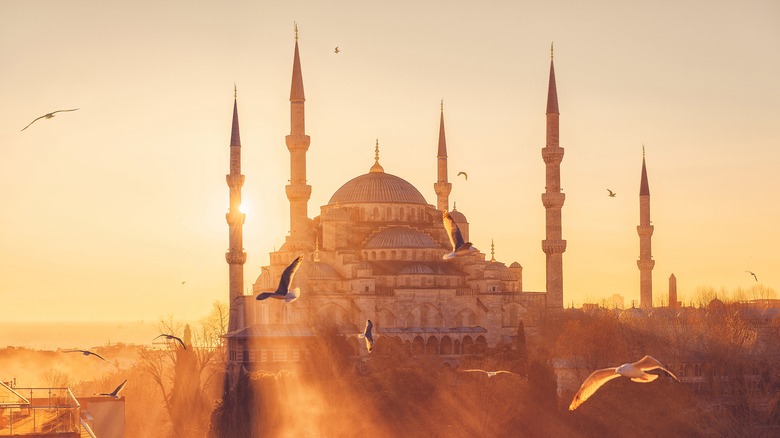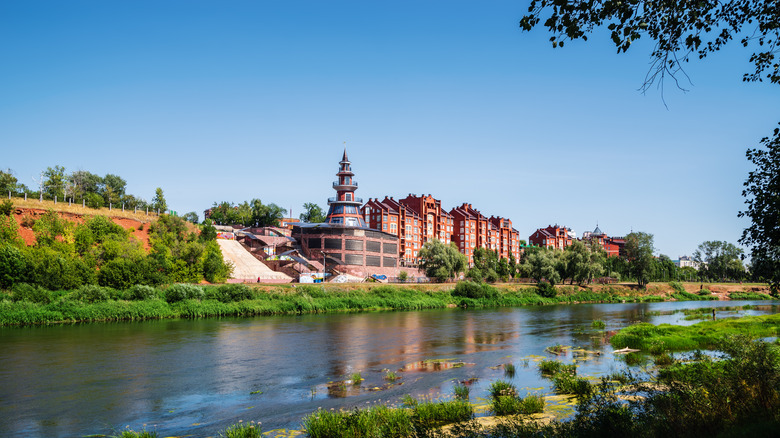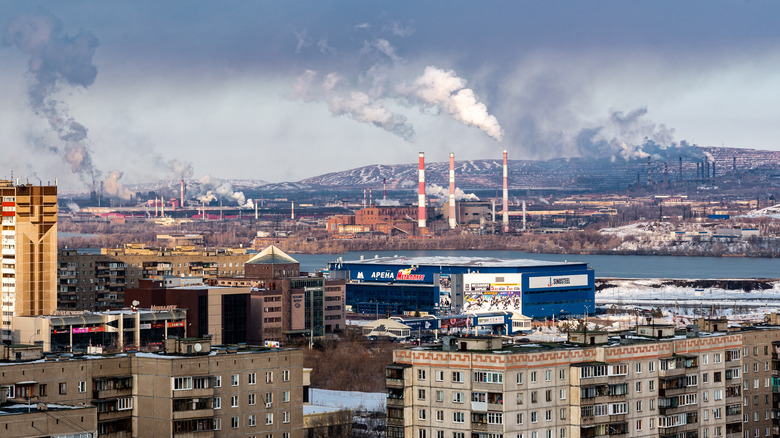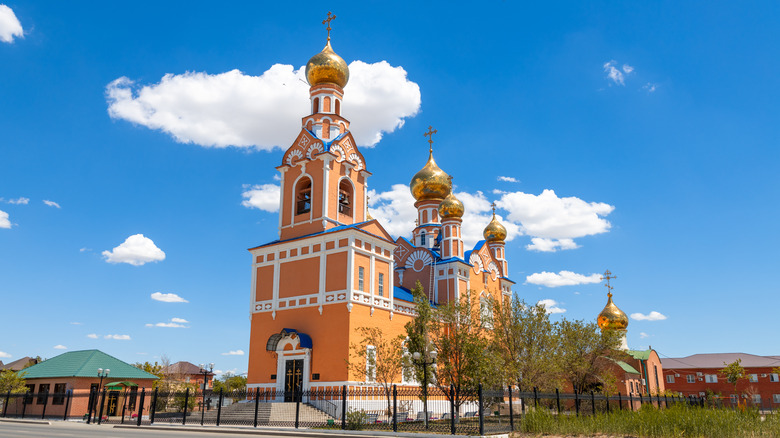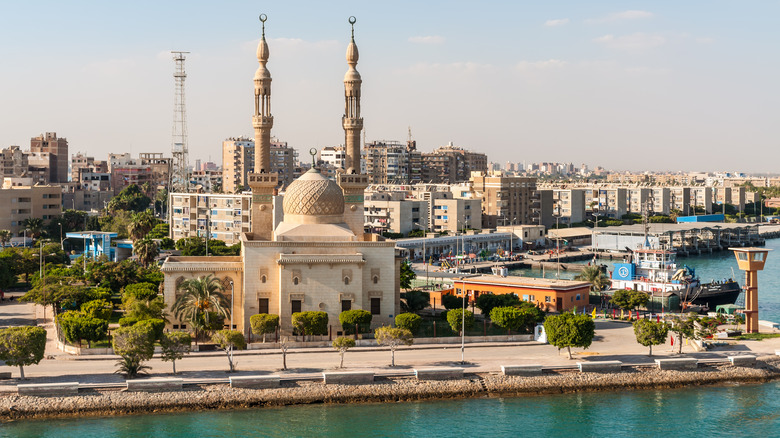Which 5 Cities Are Located On 2 Continents?
You may have heard of "sister cities," an international initiative designed by former President Dwight D. Eisenhower to create cultural exchanges between two cities across the globe, per the website of the City of Houston, Texas. For example, some of Asheville, North Carolina's sister cities are San Cristóbal de las Casa in Mexico, Osogbo in Nigeria, and Dunkeld & Birnam in Scotland, according to Asheville Sister Cities. Houston's sister cities include Abu Dhabi, United Arab Emirates; Baku, Azerbaijan; and Chiba, Japan. And a few of Miami, Florida's sister cities are Cape Town, South Africa; Curitiba, Brazil, and Viareggio, Italy, according to Miami-Dade County.
However, sister cities are different from transcontinental cities, which straddle the border between two entire continents. If sister cities are "sisters," sharing some aspect of culture, ideas, or tourism, then transcontinental cities are conjoined twins. Unique in their multicultural societies, the influences of both continents they are a part of are inseparable from their identity.
Istanbul, Turkey
By far the most populated transcontinental city in the world, 15 million people inhabit Istanbul, Turkey, which stretches across Europe and Asia, according to Travel Trivia. Known for its multicultural architecture, with iconic grand mosques lining the streets, Istanbul has historically served as a bridge between two cultures. According to World Atlas, Istanbul — formerly known as Constantinople — was the capital of the Byzantine Empire that ruled between A.D. 330-1453 and the Ottoman Empire that ruled from A.D. 1285 to 1923.
While Istanbul has long since been a bridge between two continents, it has also been caught in the middle of battling empires and conflict for more than 2,000 years (via Britannica). And just as the "forces of history" have impinged upon Istanbul, so have the forces of nature, according to Britannica. The Bosphorus Strait winds through Istanbul and separates the two continents, and water from the Black Sea as well as the Mediterranean surrounds it.
Orenburg, Russia
Orenburg, Russia also serves as a bridge between Asia and Europe, but to the northern side in Russia. Far less populated, with about 534,000 residents today, the city was officially founded in 1735 as a fortress for the Ural Cossacks, according to World Atlas. Today, its role in trading and manufacturing goods remains. An industrial city, "primary industries are oil processing, natural gas extraction, light industries, and machine-building," per Travel Trivia.
Traveling from Europe, you have to cross a bridge above the Ural River. On your way to Asia, you will pass a magnificent stone Elizabethan gate that serves as the dividing line between continents, according to Travel Trivia. For a brief moment when you pass exactly in the middle of the divide, you can look down from the bridge to the north and see Asia, and look down to the south to see Europe, truly caught between two worlds.
Magnitogorsk, Russia
Nearby, another transcontinental city also spans Europe and Asia along the Ural River, according to Travel Trivia. However, it's a bit less of a tourist destination than some of the other transcontinental cities in the world.
Although Magnitogorsk, Russia was originally also built as a fortress by the Empress Elizabeth of Austria in 1743, it later became a pet project for Joseph Stalin in the 1930s, per World Atlas. Planning to transform the landscape from mostly farm plots to a more industrialized, steel-focused society, Stalin sent Soviet workers to live and work in the city in forced labor camps secured with barbed wire, per Travel Trivia.
Today, the city still feels a little cold and industrial, with many citizens living on the European side and commuting to work in an iron and steel plant on the industrial side along Asia, which suffers from lots of pollution, per Travel Trivia.
Atyrau, Kazakhstan
Another transcontinental city that has a big focus on producing energy products is Atyrau, Kazakhstan. The third transcontinental city connecting Europe and Asia along the Ural River, Atyrau was established as a fishing port named Guryev in the 1600s, according to World Atlas; it was renamed in 1992. Later on, oil and processing plants became central to the city's economy, so much so that it was "named as the oil capital of Kazakhstan in 1999," according to Travel Trivia.
What's unique about Kazakhstan is that it is bordered by Russia, China, Uzbekistan, and Turkmenistan, so the entire country is very heavily influenced by lots of mixing cultures, per Travel Trivia. Unfortunately, because of its rich mineral resources and large areas of arable land, it has historically been exploited, including during the Soviet period, according to Britannica. As a result, the "Kazakhs' traditional customs uneasily coexist alongside incursions of the modern world," per Britannica.
Suez, Egypt
The only transcontinental city to serve as a bridge between Africa and Asia, Suez, Egypt is located, as you might have guessed, along the Suez Canal, per Travel Trivia. Suez was a part of Ancient Egyptian civilizations starting in the 25th century B.C., where Egyptian pharaohs used it as a safe place to hide when the country was being invaded, according to Travel Trivia. A center of multiple cultures, as are many transcontinental cities, it later became the Greek town of Clysma and the Muslim city of Qulzum, per World Atlas.
The city has also long since been a departure point for Muslims on their pilgrimage journey to Mecca, due to its location along the route, per Travel Trivia. Today, its place on the Suez Canal, which took a decade to build before finally opening in 1869, has been pivotal in global trade, because the canal is the shortest route from the Atlantic and lands near the Indian and Western Pacific Oceans, according to The Indian Express.

